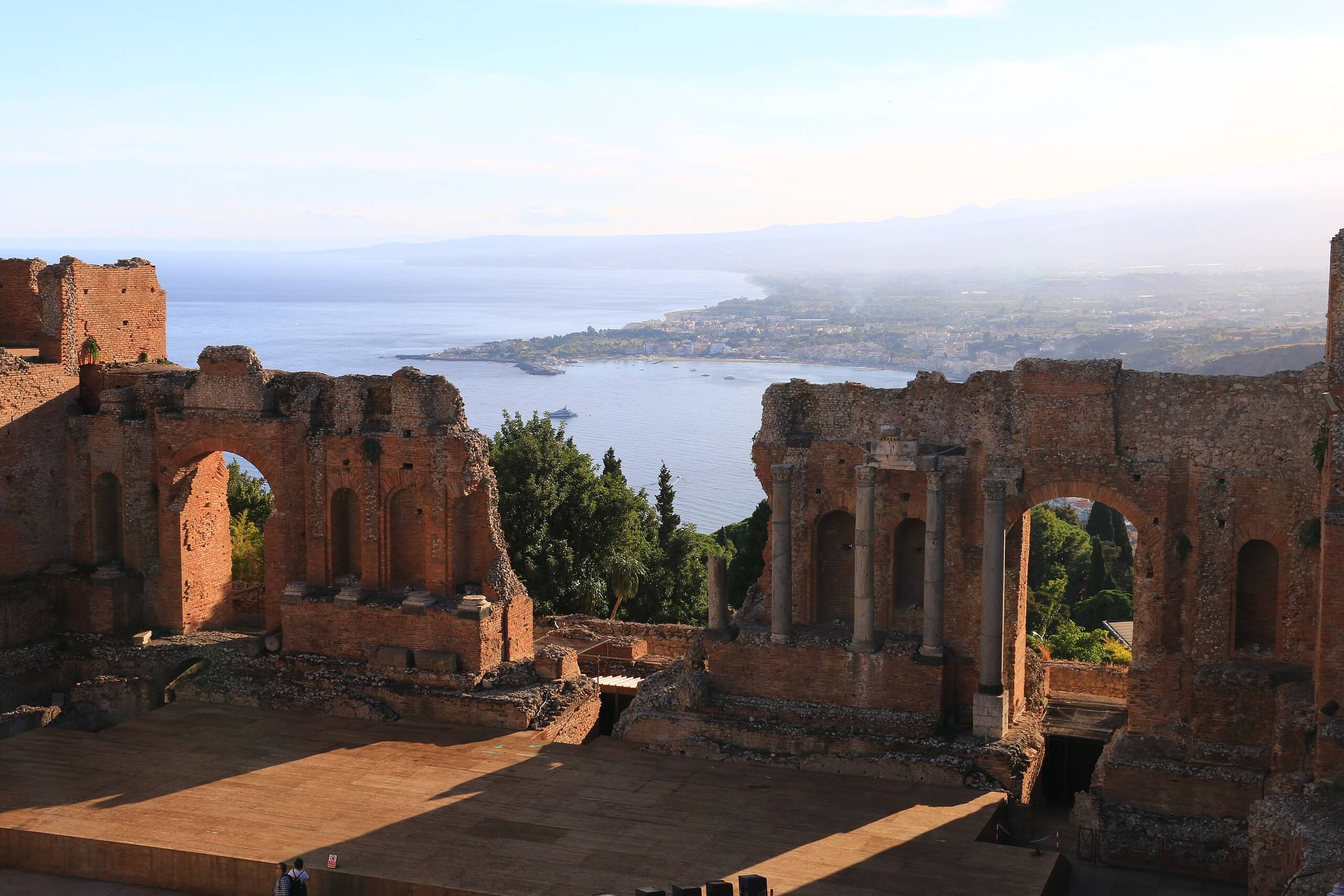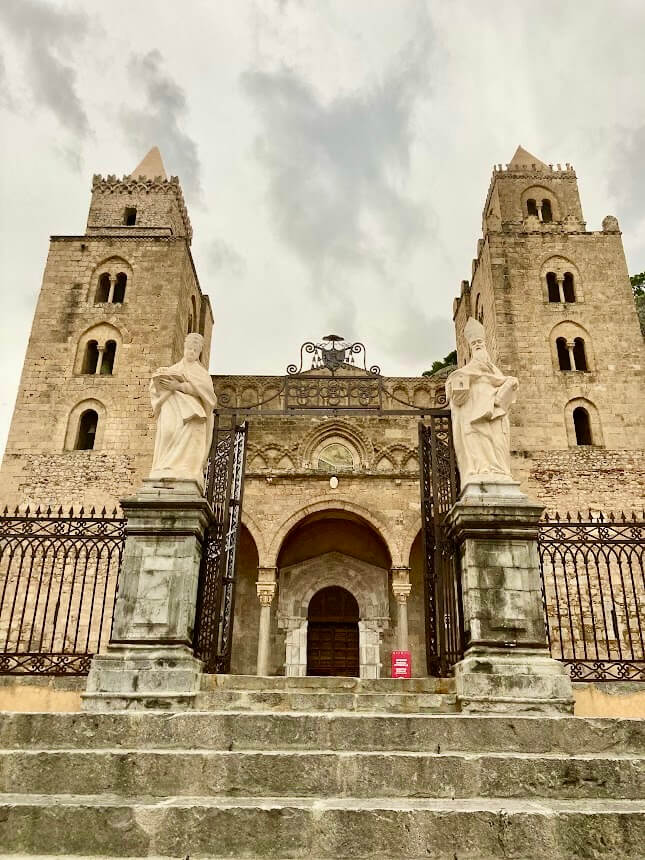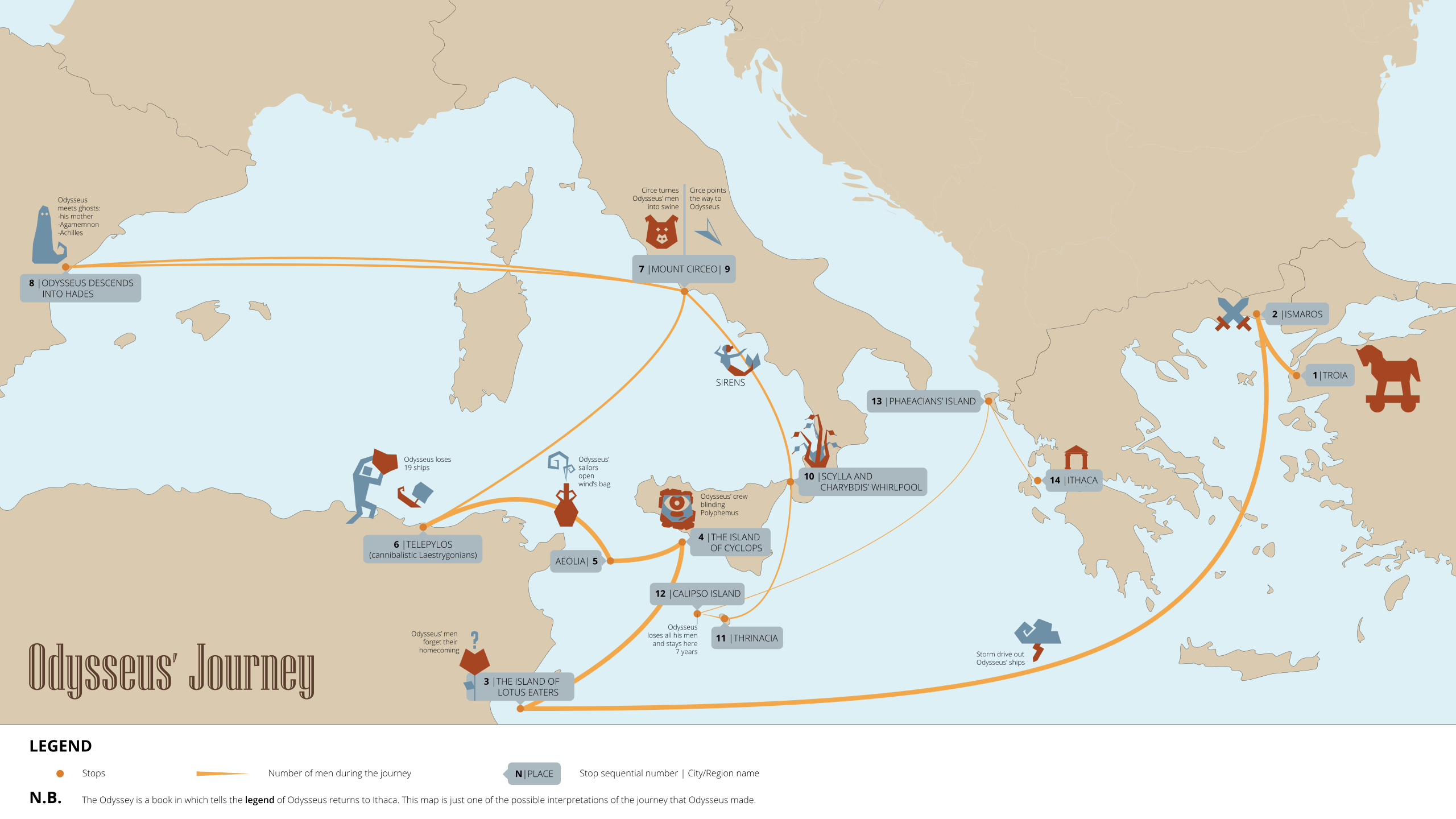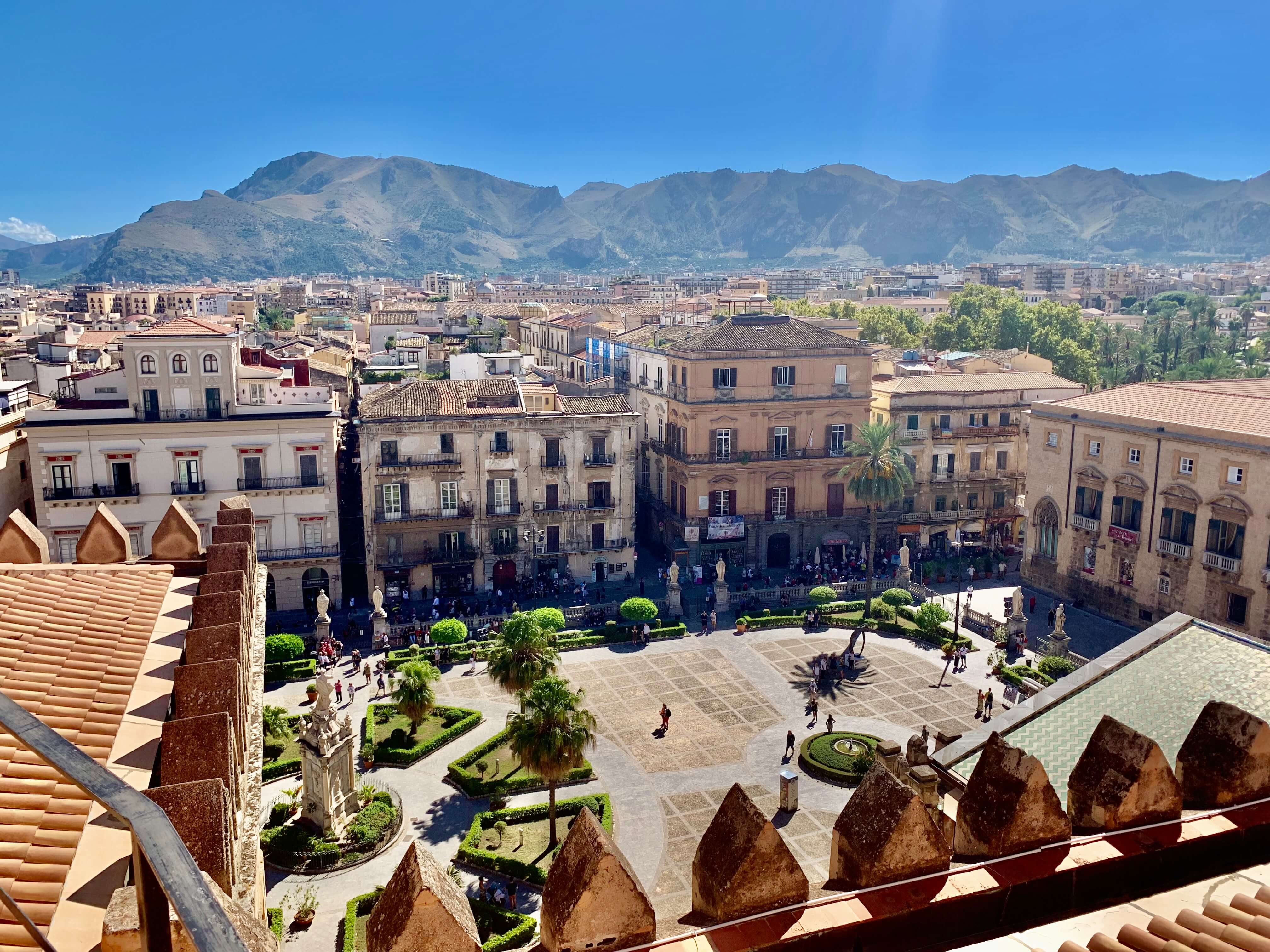- Home
- Is Sicily Part of Italy?
Is Sicily Part of Italy? The Strained Relationship Between the Island and the Mainland
Is Sicily part of Italy? The short answer is: yes. At least on paper. But the reality is more complicated.
In the heart of the Mediterranean Sea, Sicily has always enjoyed close relations with its mainland counterpart, Italy. At the same time, the island has always had a strong history, mythology and cultural identity of its own.
From its ancient origins to its complex and colorful present, Sicily's journey has shaped it into a unique place that is as irresistibly charming as it is culturally rich. The island's strategic location has attracted the most remarkable civilizations of their times to its shores.
This article delves into the historical and cultural connections that have bound Sicily to Italy. Discover how Sicily's Greek heritage influenced the development of Italy's early civilization. Explore the architectural marvels born from the fusion of Norman, Arab, and Byzantine influences. Unravel the island's connection to the Italian Mafia, a legacy that has left an indelible mark.
 Greek theater in Taormina. One of the many Greek ruins in Sicily. (Photo: Benjamin Smith / Wikimedia Commons)
Greek theater in Taormina. One of the many Greek ruins in Sicily. (Photo: Benjamin Smith / Wikimedia Commons)Historical Background of Sicily
Sicily's history is a tapestry of diverse civilizations. In the 8th century BC, the ancient Greeks colonized the island and established thriving city-states such as Syracuse and Agrigento. The Greek influence is still evident in the island's language, cuisine, and artistic traditions.
Sicily's strategic location at the crossroads of the Mediterranean made it a coveted prize for successive empires. Over the centuries, the Carthaginians, Romans, Byzantines, Arabs, Normans, and the House of Aragon ruled the island, among others. Each civilization brought customs, architectural styles, and administrative systems, creating a rich tapestry of cultural diversity that was uniquely Sicilian.
The Norman conquest of Sicily in the 11th century marked a significant turning point in the island's history. Under the rule of the Norman kings, Sicily experienced a golden age. The Normans constructed magnificent cathedrals, castles, and palaces that showcased the fusion of Norman, Arab, and Byzantine influences. This architectural legacy continues to captivate visitors from around the world.
 Cefalu Cathedral is an example of Norman architecture. Inside, visitors will also find many Byzantine and Islamic influences.
Cefalu Cathedral is an example of Norman architecture. Inside, visitors will also find many Byzantine and Islamic influences.Is Sicily Part of Italy? - Unique Cultural Aspects of Sicily
One of the most intriguing aspects of Sicilian culture is its strong sense of regional pride and autonomy. Sicilians have long maintained a distinct cultural identity. This has led them to often fiercely assert their independence from the Italian mainland.
The Sicilian language, a Romance language derived from Latin, is one example of this cultural distinctiveness. While closely related to Italian, Sicilian has its unique vocabulary, grammar, and pronunciation. The Sicilian language is both a means of communication, and a symbol of cultural identity passed down through generations.
Another hallmark of Sicilian culture is the island's rich folklore and mythology. It is deeply rooted in the island's natural but supernatural-seeming landscapes. Legends and tales of gods, goddesses, and mythical creatures also reflect the island's ancient Greek heritage.
Odysseus sailed between two sea monsters in the Strait of Messina. The Cyclops, which ate the crew of Odysseus, is also said to have lived in Sicily. Near Catania, you can even see islands formed by the stones on which the Cyclops threw Odysseus' ship. Volcano Etna also plays its part in many myths, as do nymphs - and men who fell for them.
All this shows how closely Sicily has been linked to European culture since ancient times.
 Odysseus' journey home from the Trojan War took ten years. Along the way, he had many adventures. The sea monsters and one-eyed giants are set in Sicily.
Odysseus' journey home from the Trojan War took ten years. Along the way, he had many adventures. The sea monsters and one-eyed giants are set in Sicily.Is Sicily Part of Italy? - The Influence of Italy on Sicilian Culture
While Sicily has maintained a distinct cultural identity, Italy's influence on the island's cultural landscape is undeniable. The unification of Italy in the 19th century, known as the Risorgimento, significantly impacted Sicily, as the newly formed Italian state incorporated the island into it.
One of the most prominent examples of Italy's influence on Sicilian culture is the language. Although Sicilian is a distinct language, the increasing use of Italian in education, media, and administration has led to a gradual linguistic convergence. Many Sicilians, especially the younger generations, now speak a blend of Sicilian and Italian, known as "Siculo-Italian."
Despite—and because of—their shared history, Sicilians are often skeptical about the Italian state. The roots of this suspicion go back to Italy's independence, which led to the immense impoverishment of southern provinces. The southern population starved while merchants sold much of the natural resources to the northerners.
Is Sicily Part of Italy? - The Connection Between Sicilian and Italian Cuisine
Sicily's culinary traditions are inextricably linked to the broader Italian gastronomic landscape. Sicily's strategic location in the Mediterranean has made it a hub for trade and cultural exchange, allowing diverse culinary traditions to influence its cuisine.
The most famous example of the island's Arabic influences is Sicilian arancini. You'll also find these fried rice balls stuffed with meat and cheese elsewhere in Italy. However, they originated in Sicily and date back to the Arabic period on the island in the Middle Ages.
 Eating arancini with some local lemonade in Ragusa.
Eating arancini with some local lemonade in Ragusa.The Sicilian version of pizza is called 'sfinciuni'. Its origins are also obscure in history, possibly in the flatbread of the ancient Greeks. Others say it has its roots in Jewish cuisine. Either way, it is a genuine Sicilian product, a crunchy delicacy found especially in street kitchens.
Sicily has also made significant contributions to the broader Italian culinary canon. Pasta dishes such as Pasta alla Norma, featuring eggplant, tomatoes, and ricotta, have become beloved classics in Italian cuisine. The island's unique citrus fruits, such as blood oranges and lemons, have also found their way into numerous Italian desserts and beverages, including the iconic Aperol Spritz.
Is Sicily Part of Italy? - Sicily's Contribution to Italian Art and Literature
Sicily's rich cultural heritage has influenced its artistic and literary landscape and left an indelible mark also on Italy. The island's architecture, from the ancient Greek temples of Agrigento to the Baroque splendor of Noto, has long inspired Italian artists and architects, fostering a sense of inspiration and appreciation.
Sicily has also produced some of Italy's most renowned authors in literature. The Sicilian writer Giovanni Verga, a pioneer of Italian verismo (realism) literature, is famous for his gritty depictions of life in rural Sicily. His works, such as the novel I Malavoglia, have profoundly influenced Italian literature and continue to be studied and celebrated today.
Sicilian-born writer Leonardo Sciascia, known for his novels and political essays, is one of the great names in Italian literature. His works explore the complexities of Sicilian society and the island's relationship with the Italian state. He has gained critical acclaim and influenced generations of Italian writers, including the creator of Inspector Montalbano, Andrea Camilleri - also from Sicily.
 Andrea Camilleri, the creator of Inspector Montalbano. (Photo: payhere / Wikimedia Commons)
Andrea Camilleri, the creator of Inspector Montalbano. (Photo: payhere / Wikimedia Commons)Is Sicily Part of Italy? - The Economic Relationship Between Sicily and Italy
The economic relationship between Sicily and Italy has been complex and often contentious. While Sicily has long been an integral part of the Italian economy, the island has struggled to integrate and fully capitalize on its economic potential.
One of the primary challenges facing Sicily's economy has been the persistent issue of regional disparities. For historical reasons, the island has yet to catch up to northern Italy's more industrialized and prosperous regions regarding economic development and employment opportunities. This has led to a persistent north-south divide within Italy, with Sicily often feeling overlooked and undervalued by the central government.
Despite these challenges, Sicily has significantly contributed to the Italian economy, particularly in the agricultural and tourism sectors. The island's fertile land and favorable climate have made it a major producer of citrus fruits, olives, grapes, and other high-quality agricultural products in high demand throughout Italy and beyond.
Similarly, Sicily's rich cultural heritage and natural beauty have made it a popular tourist destination, attracting visitors worldwide and generating significant revenue for the Italian economy.
Challenges and Controversies in the Sicily-Italy Relationship
The relationship between Sicily and Italy has been challenging and controversial. The island's long history of political and social upheaval and its complex relationship with the Italian state has led to many complex issues that continue to shape its identity and place within the Italian nation.
One of the most enduring controversies in the Sicily-Italy relationship is organized crime, particularly the Sicilian Mafia. The Mafia's origins trace back to the 19th century when it emerged as a powerful criminal organization that exerted significant influence over the island's political and economic affairs.
The Mafia's entanglement with the Italian state and the perceived collusion between organized crime and government officials have been a source of ongoing tension and mistrust between Sicily and the Italian mainland.
Another area of contention is regional autonomy and the ongoing debate over the balance of power between Sicily and the Italian central government. Sicilians have long advocated for greater political and economic independence. This has led to periodic calls for increased devolution of power or even outright independence, further complicating the relationship between Sicily and Italy.
Conclusion
Despite the challenges and controversies that have shaped the relationship between Sicily and Italy, the enduring bond between the island and the Italian mainland is undeniable.
Sicily's rich cultural heritage, diverse architectural legacy, and culinary traditions have become integral to the Italian national identity. At the same time, the island's strategic location and natural resources have made it an essential component of the Italian economy.
Recent Articles
-
Sicilian Food - Rich Flavors, Endless Passion
Apr 09, 25 09:54 AM
All you need to know about Sicilian food, its ingredients and history. -
Things to Do in Palermo - Tips for a Perfect Holiday
Apr 05, 25 04:27 AM
Things to Do in Palermo - From historic landmarks to delicious food, this guide has it all. -
The Story of Tommaso Buscetta: From Mafia Boss to Key Witness
Mar 30, 25 05:12 AM
Tommaso Buscetta built Sicilian Mafia into a global empire - which he then destroyed.
Follow MANY FACES OF SICILY on Facebook, Instagram, Bluesky & Pinterest
Contact: vesa@manyfacesofsicily.com





